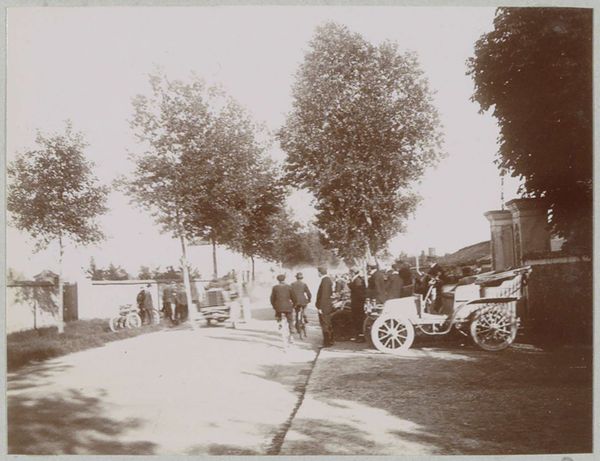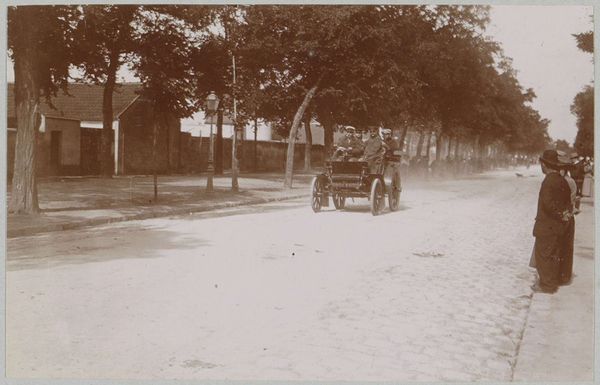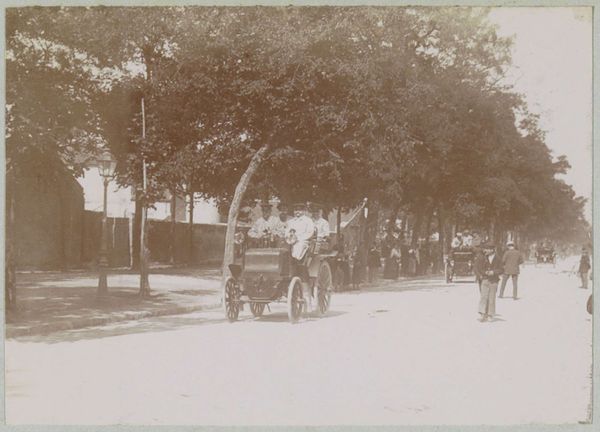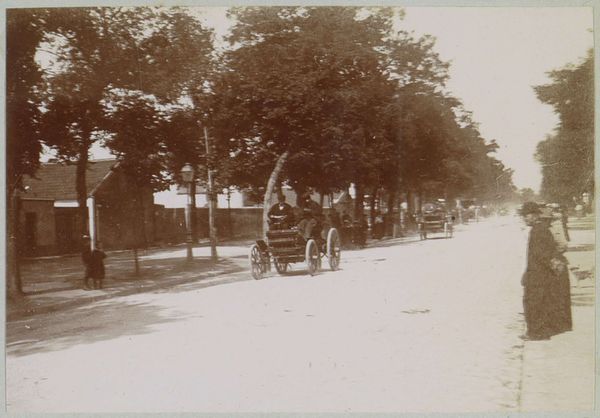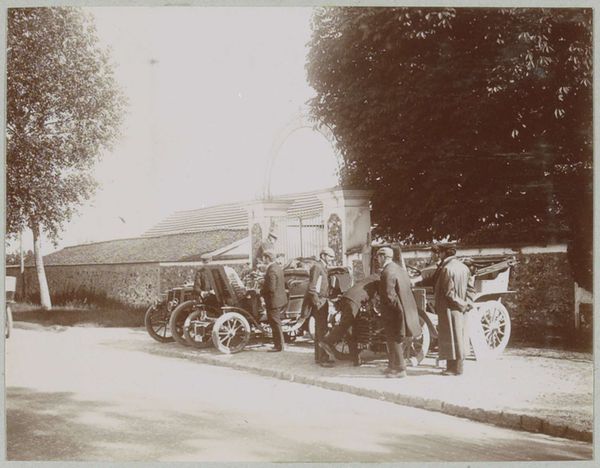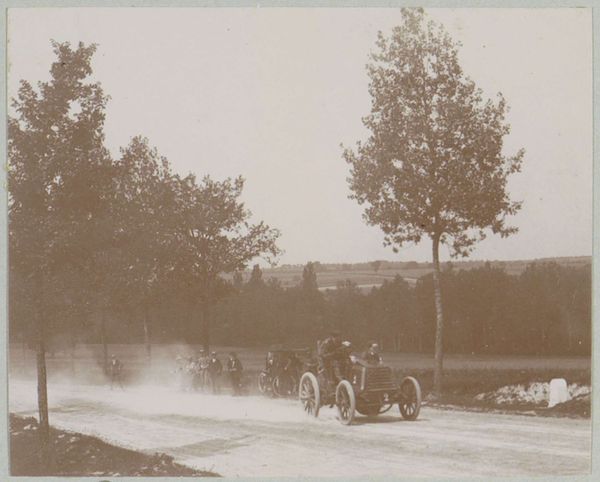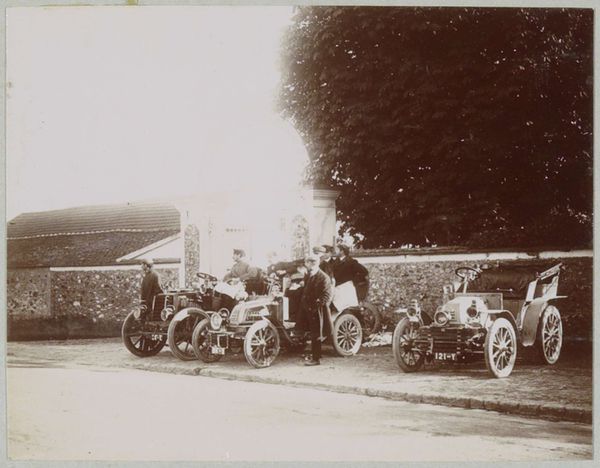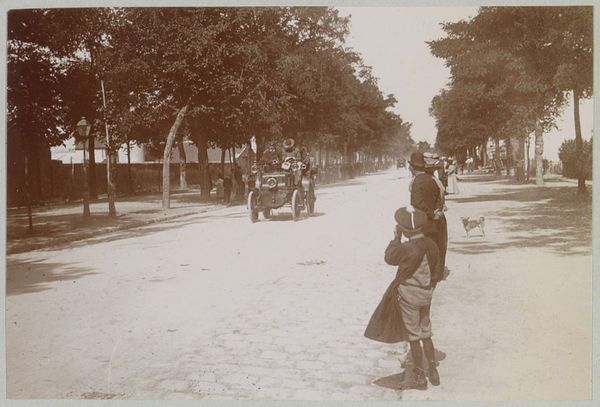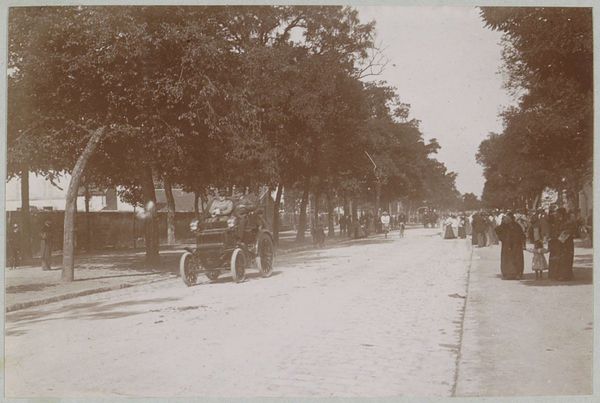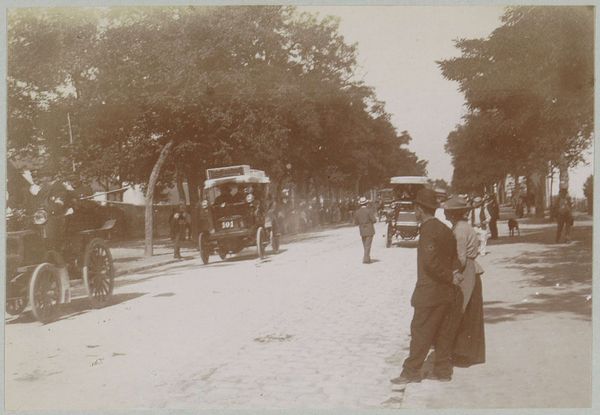
Dimensions: height 62 mm, width 82 mm
Copyright: Rijks Museum: Open Domain
Curator: This gelatin-silver print, dating from 1902 to 1906, captures "Toeschouwers en deelnemer aan de race Parijs-Vienne," which translates to "Spectators and Participant in the Paris-Vienna Race." The photograph resides here at the Rijksmuseum. Editor: It’s an intriguing snapshot in time. The composition is striking—a sense of stillness contrasted with the implied motion of the oncoming race car. The sepia tone gives it such a wistful quality. Curator: Note how Delizy employs a dynamic composition, directing the eye from the blurred car on the left to the cluster of spectators examining stalled vehicles on the right. The interplay of light and shadow across the cobblestone street and tree-lined backdrop introduces a vital pictorial rhythm. Editor: And what about the social context? Automobile races of this era were largely spectacles for the wealthy, underscoring the privilege and exclusivity of early motorsport culture. This isn't just about the formal arrangement; it highlights disparities in access and opportunity within Edwardian society. The car itself represents a disruptive, almost aggressively masculine technology asserting itself upon established landscapes. Curator: I see it instead as an investigation into texture. Observe the tonal range present, particularly across the facades in the distance. Each texture evokes a corresponding optical sensation. This careful construction transforms mechanical forms into pure aesthetics. Editor: True, yet it cannot escape being read as part of the Belle Époque's broader project, where advancements, especially in technology and transport, reshaped identities and geographies. I think that seeing spectators, mainly men in formal attire surrounding broken-down cars, shows the messy side of early automation dreams. The presence of what seems like an affluent society contrasts deeply with who directly benefits from these types of innovation. Curator: I concede that examining historical context does deepen the understanding, but that viewpoint is external to the art object. Within its borders lies only a self-contained exploration of photographic qualities. Editor: Perhaps. Yet these contexts infuse that form with significance, making it more resonant. It reminds us how much a still image can embody an era's ethos. Curator: Indeed. Considering that the aesthetic is intimately intertwined with these sociopolitical contexts grants a fuller, albeit more layered appreciation. Editor: Precisely. And a photograph, regardless of its subject matter, should always ignite new dialogues about culture and art’s place within the cultural zeitgeist.
Comments
No comments
Be the first to comment and join the conversation on the ultimate creative platform.
